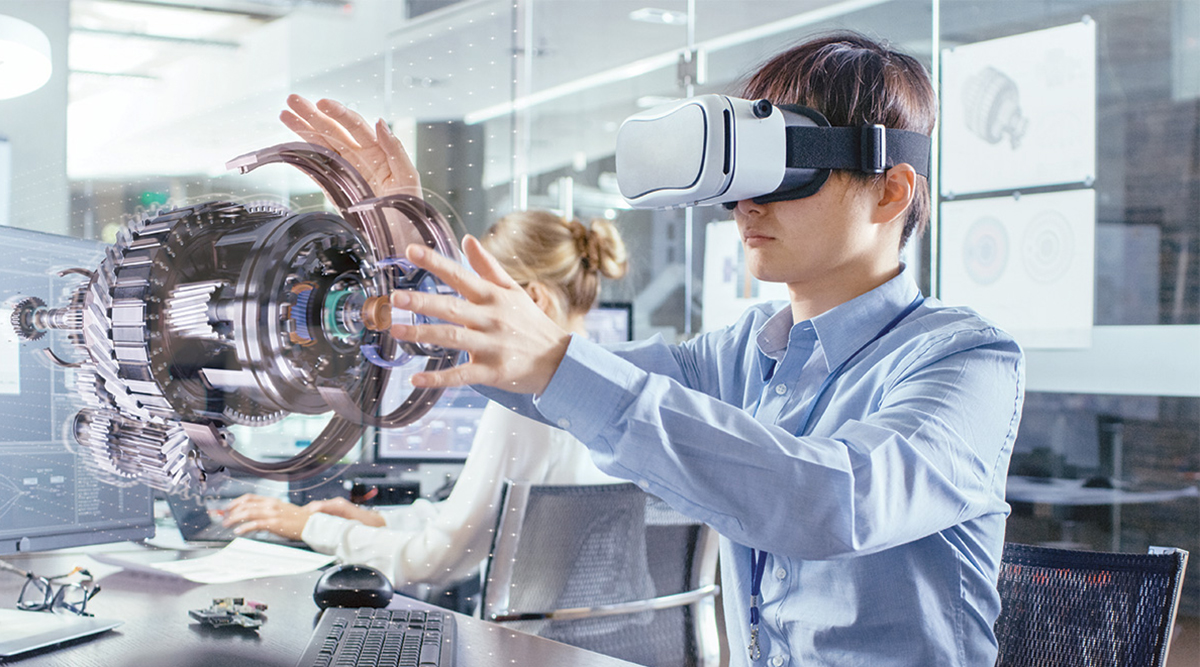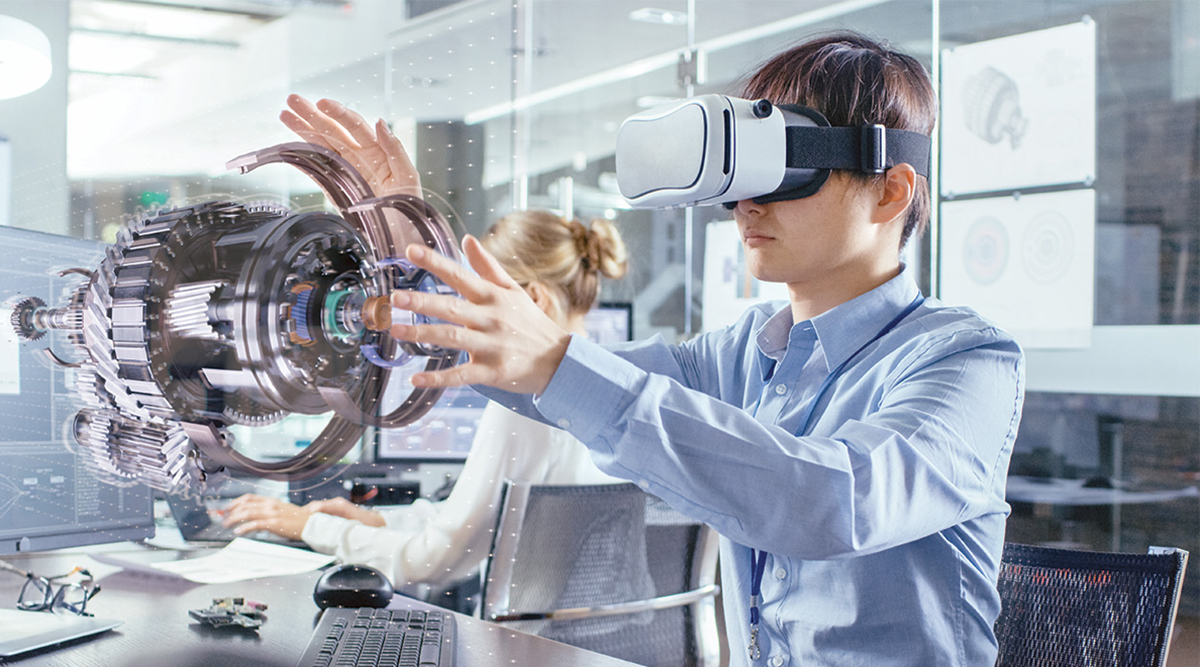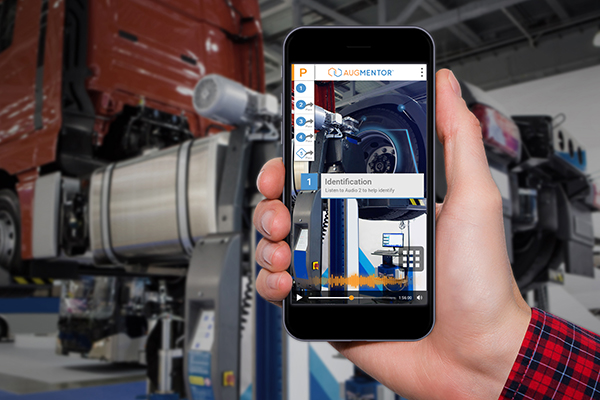Learn about brain health and nootropics to boost brain function
Game On: Trucking Gets Creative in Attracting Young Technicians


[Stay on top of transportation news: Get TTNews in your inbox.]
Millennials and Generation Z have grown up surrounded by sophisticated technologies — such as video games and augmented reality — that now are making the transition from personal pastime to business tools.
Trucking companies are exploring ways to harness these innovations to attract and retain the next generation of diesel truck technicians, an important task considering the industry’s significant labor shortage.
“We are short 76 technicians companywide. That’s a problem,” said Greg Roberts, director of maintenance administration at Hogan Truck Leasing, based in St. Louis.
Trucking, as well as other industries, has been tweaking its approach to working with younger generations, placing greater emphasis on gamification. This practice often involves technology, such as mobile devices, but it doesn’t need to.
Gamification simply means applying game-design techniques in a nongame setting to encourage workers to achieve a desired outcome. It typically incorporates accumulating points or real-life or virtual rewards and competing with peers.
“These young people have a tendency to be extremely competitive,” said Kenneth Calhoun, fleet optimization manager with Altec Service Group, and also general chairman and treasurer of the Technology & Maintenance Council, a council of American Trucking Associations.
His priorities include addressing the technician shortage and boosting education and training for potential and new employees.
A growing body of research indicates gamification keeps young employees interested in duties, especially those they may consider repetitive, mundane or boring. Gamifying creates an interactive and motivating environment said to reduce disengagement, boost productivity and provide greater long-term job satisfaction, serving as a retention tool. In short, gamification makes work fun and employees are driven by that.
Fleets can introduce gamification into technician training to better engage employees and make the task seem like less of a chore. Employees could participate in a friendly competition and receive incentives to complete training in a timely manner, achieve the highest training score or outperform peers in skills retention tests.
“We do pay employees for their training,” said Roberts of Hogan Truck Leasing. “But we have not at this point made it a contest. We would definitely entertain that — it’s a different approach.”
Today’s technician is very different than 30 years ago. There’s more computer work than wrenches.
Robert Braswell, TMC’s executive director
The practice actually is based in science. The human brain releases dopamine — the natural “feel-good” chemical — when a person receives rewards for their behavior, including achieving new levels in a game or winning a competition. Dopamine plays a significant role in cultivating reward-motivated behavior.
Plus, game play stimulates the brain’s hippocampus, an area involved with knowledge recall. That helps employees better remember what they learned through game-centric experiences.
Gamification can attract students to the trucking industry and consider a career as a truck technician. The concept increasingly is used in conjunction with technology-based tools, such as virtual reality or augmented reality.
Matt Johnson, division head of commercial solutions at Design Interactive, said his company will be creating a mobile app for gamification to attract the next generation of technicians.
“Kids play an augmented reality-based game that puts them in the shoes of a technician,” Johnson said.
Design Interactive’s partnership with TMC on the project was inspired by TMC’s annual SuperTech competition, “created to raise the professionalism of the truck technician within our own industry,” said Robert Braswell, TMC’s executive director.
It aims to change the view that “maintenance is something you have to do, it’s an expense and not something to be promoted,” he said. However, “if the technician is not doing their job, the trucks aren’t available to haul freight,” Braswell said.
The upcoming recruiting app will use augmented reality: overlaying digital visual elements onto the real-life environment. Virtual reality is similar, but the real-life environment is completely removed, and the user instead views and interacts with only a digital world.
VR requires a virtual headset or glasses to see the digital scene, whereas AR can employ those tools or handheld devices like smartphones and tablets.
The app — aimed at teens and preteens — currently is in the pre-development phase as TMC seeks additional sponsorship. As of mid-June, development was anticipated to begin sometime this summer, and the app could be publicly released at next year’s TMC fall meeting, although the timeline is fluid.
“The idea of a free app you can download — and it’s tied to social media so there’s a sense of competition — that makes things fun,” Braswell said.
TMC and various vocational educational programs across the country are working to change the image of diesel technician careers as undesirable because they’re perceived as “greasy” or “dirty.”
“Today’s technician is very different than 30 years ago,” Braswell said. “There’s more computer work than wrenches.”

The Augmentor app lets techs access troubleshooting methods on their phones. (Design Interactive)
Arkansas’ Be Pro Be Proud initiative seeks to revise that image and interest students in pursuing skilled trade careers. Be Pro Be Proud also incorporates an educational campaign aimed at parents to help them understand that trades provide solid career paths and compensation.
“Parents don’t want their children going into these types of programs,” said Cody Waits, deputy director for the office of skills management at the Arkansas Department of Career Education. “It’s a huge problem. We’ve been trying to flip the switch to show them that the facilities [students] are training in have state-of-the-art equipment, they’re utilizing technology within this work, and it’s a viable career option.”
A key component of Be Pro Be Proud is a tractor-trailer that travels throughout the state to elementary schools and trade shows with equipment — including AR headsets — to let students virtually try their hand at being a diesel technician.
“You’ve got the combination of the real and intangible in your hand,” Altec’s Calhoun said. “We learned very quickly… that if someone bested [a student’s] score, they were immediately back in there trying to make theirs better. That competitive desire in the students had them going back over and over again because someone outscored them.”
“Making that connection with students and technology is going to be something that allows them to look at it in a different perspective than what they may have in the past and increase interest in diesel technician programs,” Waits said.
Other states, including South Carolina, are investigating or launching Be Pro Be Proud programs or similar technology-forward initiatives to attract young students to education for technician careers.
AR and VR innovations attract students to vocational education, but they also could attract new employees to fleets, industry participants said.
Southeastern Freight Lines will “most assuredly” research and consider purchasing AR and VR technologies in the coming months, said Jim Boyd, the company’s manager of fleet technical services.
“We rely heavily on hands-on training,” he said, adding that as AR-VR becomes more mainstream, the company will be an early adopter of the technology.
“We have already partnered with a potential supplier — allowing them use of our facilities for testing and development,” Boyd said. “We are excited to see what the next phases will be.”
He noted that AR benefits fleets in two main areas, with training being the first.
“For tactile learners, like technicians, AR/VR has great potential. The retention of class- and lab-led training pales in comparison to that of actual, hands-on work — which is where AR/VR could really shine,” Boyd said.
AR’s second value-added area is the ability for technicians to walk through processes in real time while they work.
Design Interactive’s fleet maintenance training product, called Augmentor, works in both sce- narios. The AR-based app allows technicians to access procedures and troubleshooting methods on their mobile phones, so they “consume the content right there at the truck,” Johnson said.
Augmentor was conceived to allow the retiring workforce to share institutional knowledge with new technicians.
“Wearing a headset and using our software, an expert can capture a first-person video of them performing a task, structure that procedure and then with a click of button, send it to the cloud,” Johnson said. “It makes what they know available to everyone else.”
The next step would be for OEMs and suppliers to use this to share their content directly with fleets, he said.
AR technologies could provide technicians quicker and easier access to TMC-recommended practices while working, instead of stepping away from a truck to consult a manual, search the internet or rely on memory, said Bill Brown, a recently retired manager of fleet telematics at Southeastern Freight Lines.
The tools could lower costs associated with training and labor because every employee with a handheld device can quickly access the same virtual information, which is updated regularly in the cloud. That diminishes the need for multiple employees to conduct training at fleets’ multiple facilities and purchasing updated tear-down components every few years for technicians to use for training.
“In many industries, AR and VR already are key components to keeping workers current,” Calhoun added. “It’s a very cost-efficient way to do that. This technology definitely is going to be a brute force in trucking.”
Fleets investigating AR or VR technologies should consider each tool’s ideal applications, Brown said. For example, VR works for training, but AR is better for real-time simulations.
“Augmented reality is not particularly dangerous in a shop setting, whereas VR — removing the person from all ability to see what’s around them — would be horribly dangerous,” Brown said. “AR improves your reality; it does not replace it.”
AR and VR headset costs and durability could be barriers for fleets, he said, although some AR applications presently can be used on mobile devices. There’s “no question” these cutting-edge technologies will transition into prominent next-generation recruiting and retention tools going forward, Brown said.
Click here to view full article